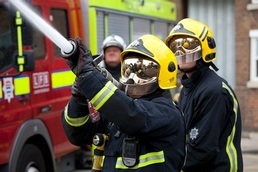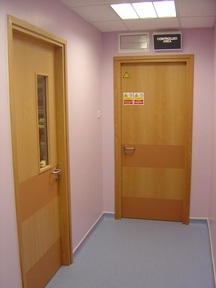Former firefighter calls on Government to make fire sprinklers compulsory in care homes
A fall in the number of fire fatalities in England show the benefits of increased enforcement of regulation and the installation of sprinklers, according to former firefighter and managing director of Safety Management UK (SMUK) Brian Gregory.

Statistics from the Department for Communities and Local Government show that local authority fire and rescue services attended 102,000 fires between April and September 2013, which is 55 per cent fewer than in the same period of 2002.
For Mr Gregory the figures are proof that a new sprinkler combined with better enforcement of regulations will bring down fire deaths even further, perhaps even by half.
He comments: “These figures are to be welcomed and they show the great strides that have been made in fire safety, risk assessment and awareness over the past decade.
“But we still have some way to go. We believe now is the time for the Government to act on sprinklers to ensure that we keep driving the number of deaths lower and lower.
“Sprinkler systems are a life-saver. They won’t put a fire out, but they will stop it from spreading. They buy time and for elderly or infirm people that can be vitally important.
“The UK has detailed and stringent regulations with regard to fire alarms and fire separation requirements. We want to see regulations for sprinkler systems added to this.
“That way, the 140 deaths a year we currently have would be cut by more than half virtually overnight.”
Training, events and seminars
John Fletcher, scheme manager of BWF-CERTIFIRE, who organises fire safety seminars in association with the Association for Specialist Fire Protection (ASFP), urges the care sector to get involved, saying: “We have found that care home providers are very often under-represented at fire safety events.
“It is crucial that anyone responsible for specifying or checking a building’s fire safety understands how passive fire protection solutions such as fire doors will help them to meet their obligations under the Regulatory Reform (Fire Safety) Order, known as the RRO, to protect property, save lives and avoid prosecution and heavy fines.”

Brian Gregory continues: “We have to educate people about the value of sprinklers. It is all part of the process of creating a more pro-active attitude to fire risk assessment.
“It’s about looking at a building and seeing what is and isn’t being done to make it a safer place when it comes to the risk of fire.
“It’s also going beyond the bricks and mortar. Landlords should be continually assessing their fire advice to their tenants and ensuring every person living in their property knows what to do in the event of a blaze.
“We would urge every social housing provider and care home in the country to assess their fire prevention procedures and to look towards installing sprinklers.
“The cost of retro-fitting is now significantly less than it was in the past, to the point we recently recommended the retro-fitting of sprinklers in a care home, as against upgrading fire doors, and this was the more cost effective option.”
The ASFP organise a range of seminars throughout the UK – more details can be found here, while May 20–21 sees the Fire Sprinkler International 2014 take place in London, at the Grange Tower Bridge Hotel.
“Fire Sprinkler International 2014 promises to be our best-attended conference yet” says Alan Brinson, executive director of the European Fire Sprinkler Network (EFSN) and co-organiser of Fire Sprinkler International 2014 alongside the British Automatic Fire Sprinkler Association (BAFSA), “we have more speakers and exhibitors than ever, making this an outstanding opportunity to catch up on the latest sprinkler developments.”
Latest News
 29-Jul-24
Dementia Bus gives carehome.co.uk staff insight into life with dementia
29-Jul-24
Dementia Bus gives carehome.co.uk staff insight into life with dementia
 01-Mar-24
Find out the top care homes in 2024
01-Mar-24
Find out the top care homes in 2024
 21-Mar-23
UK's top care homes in 2023 revealed
21-Mar-23
UK's top care homes in 2023 revealed
 03-Jan-23
carehome.co.uk launches free care helpline
03-Jan-23
carehome.co.uk launches free care helpline
 13-Dec-22
5 mins with Emily Whitehurst, chief operating officer for Constantia Healthcare
13-Dec-22
5 mins with Emily Whitehurst, chief operating officer for Constantia Healthcare